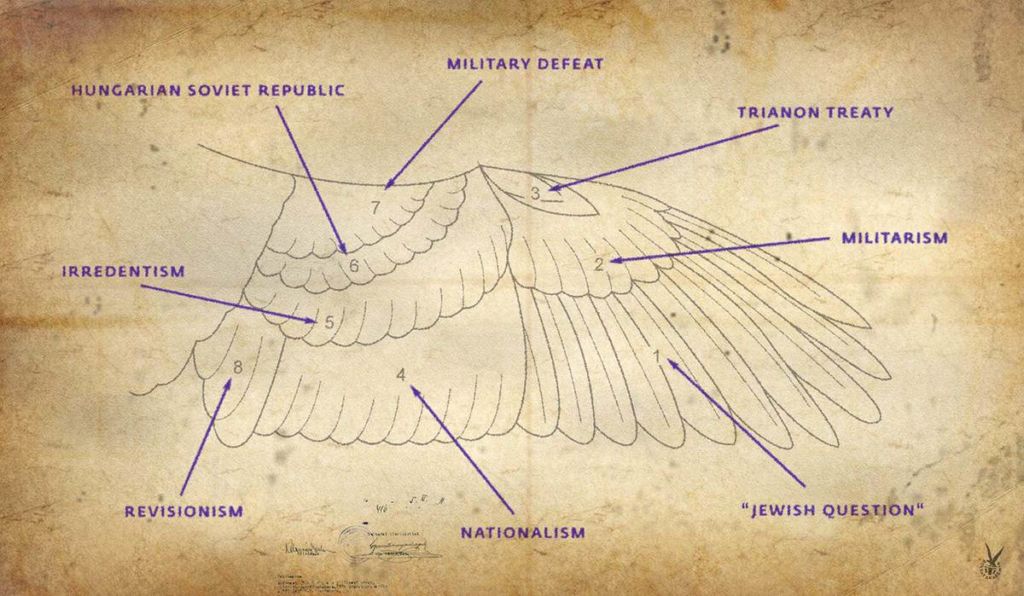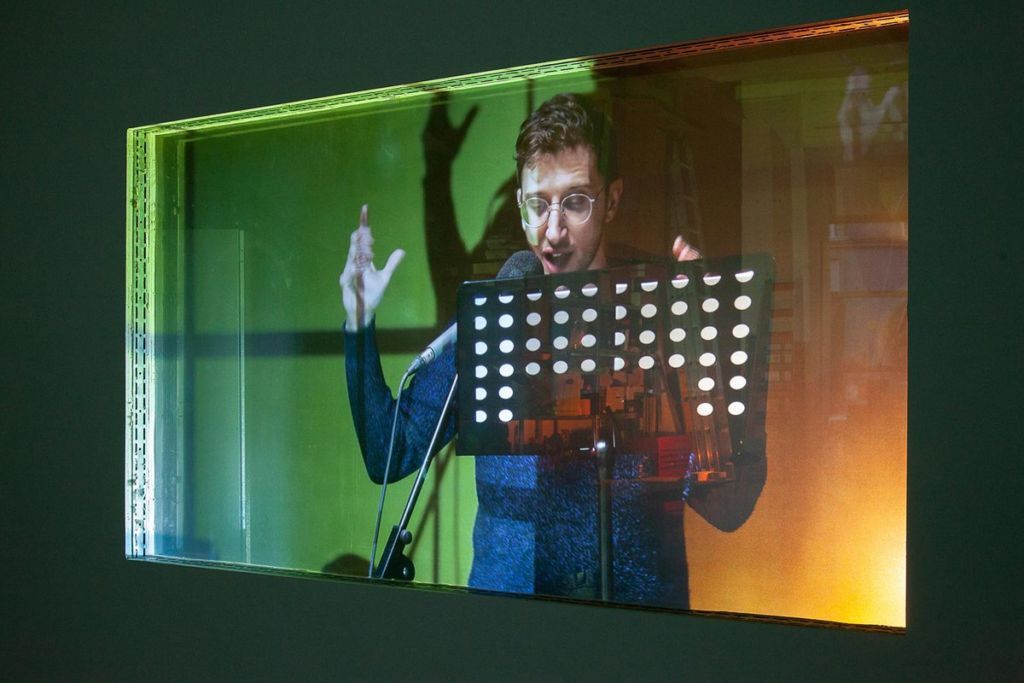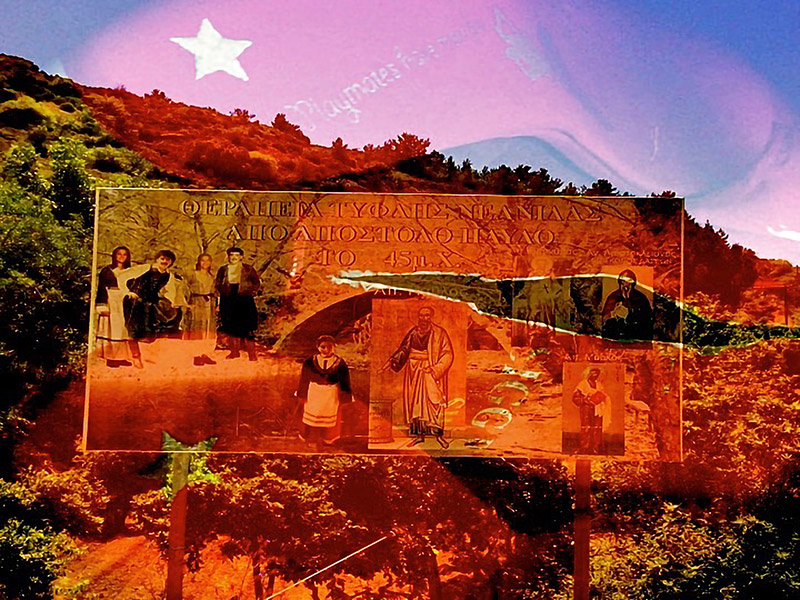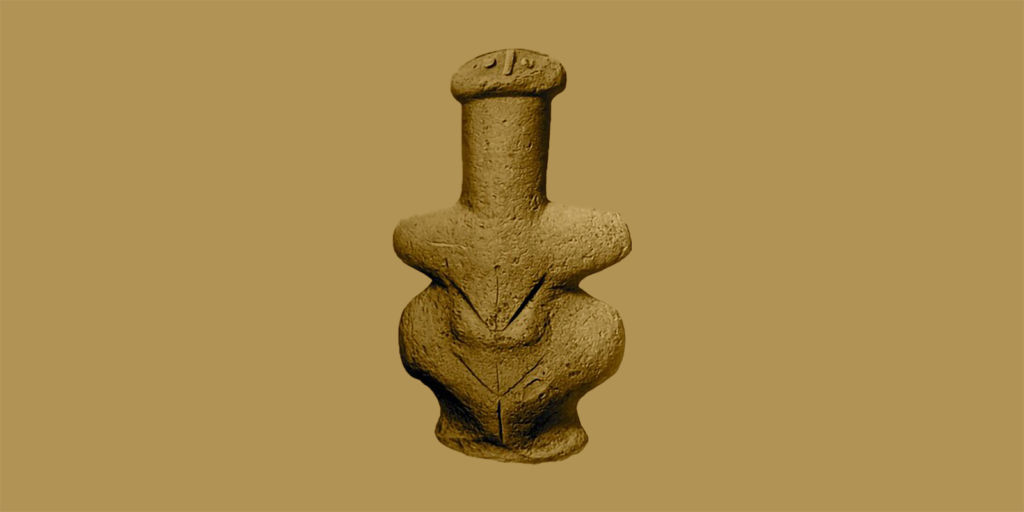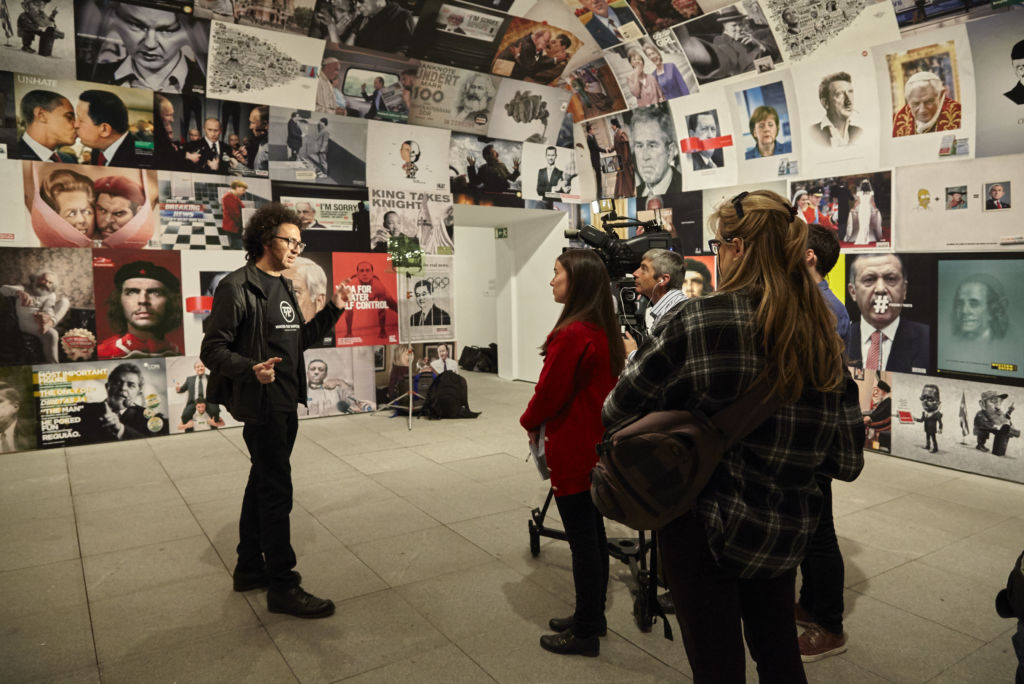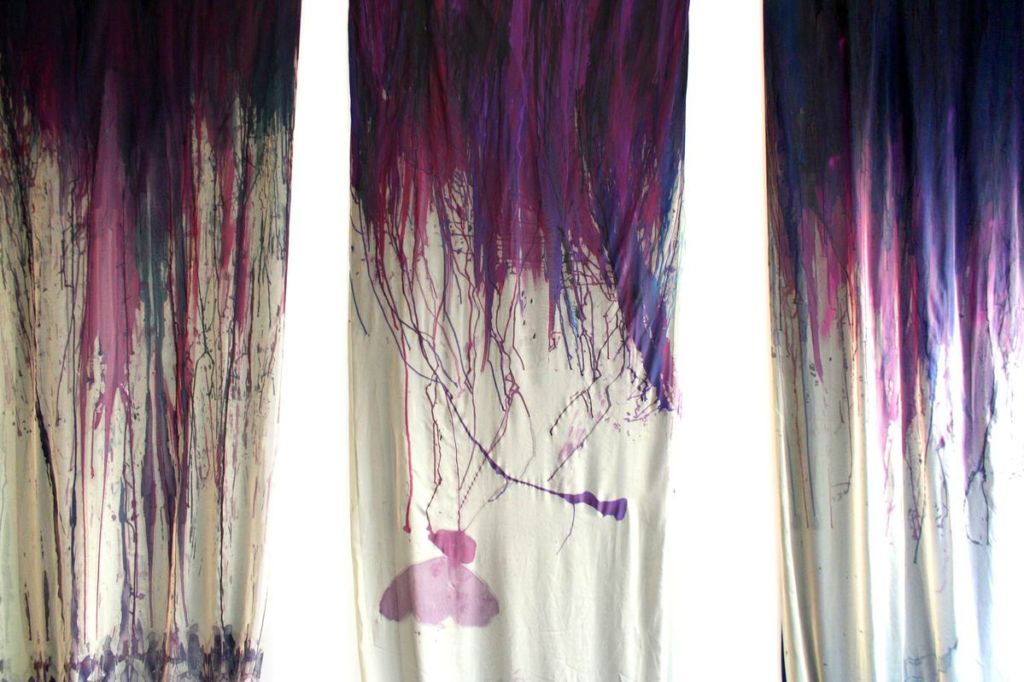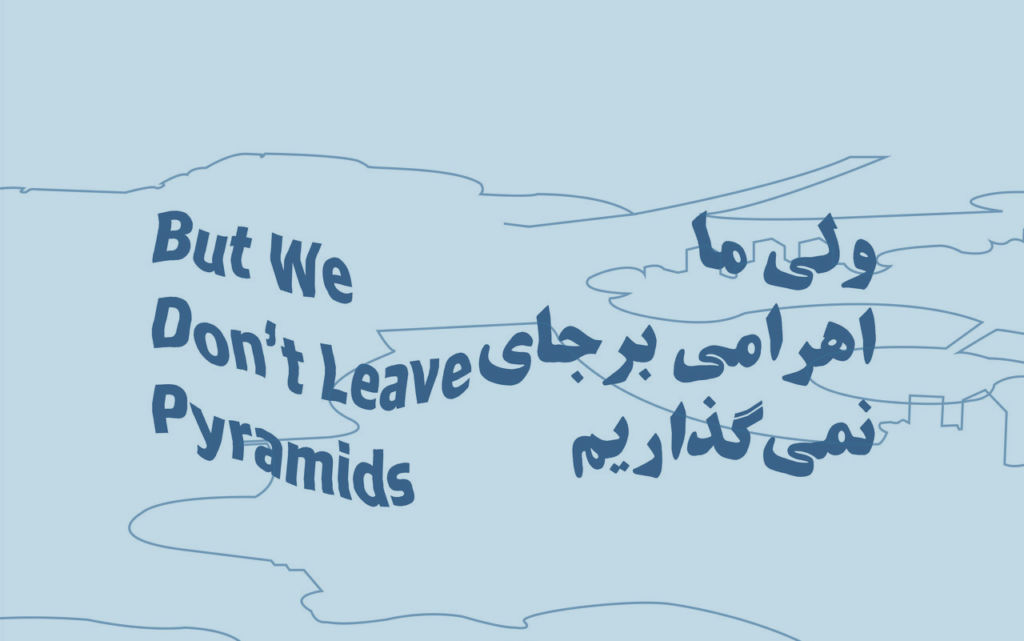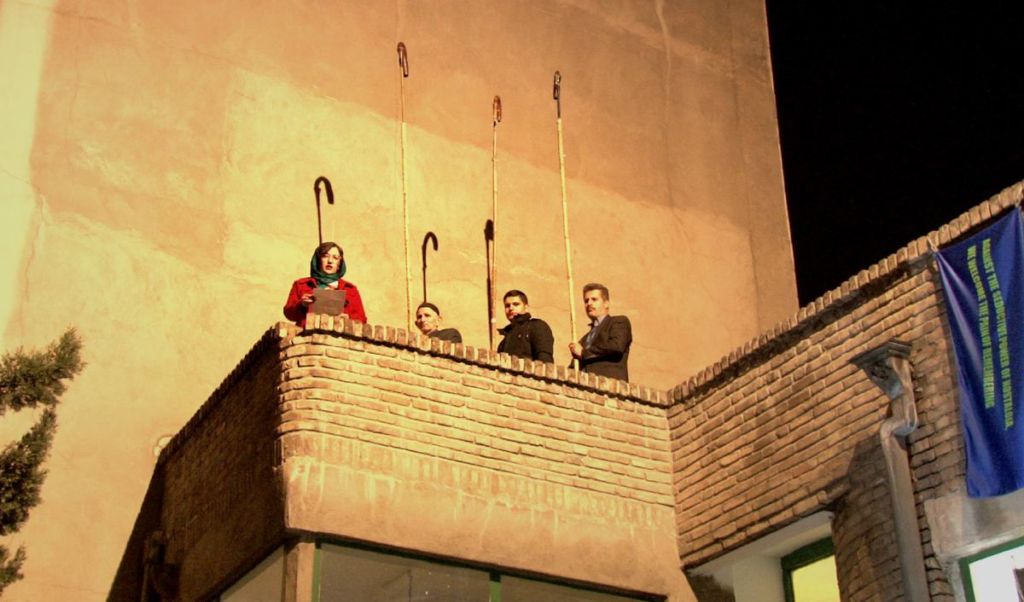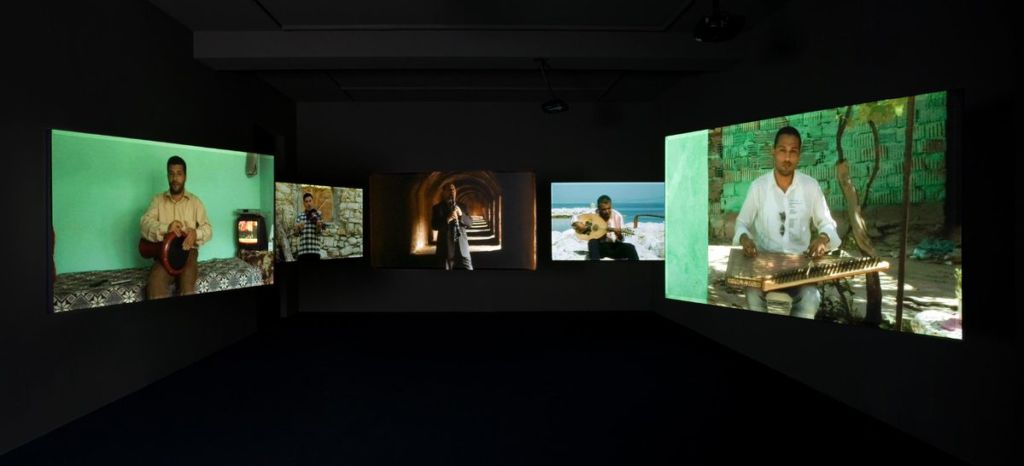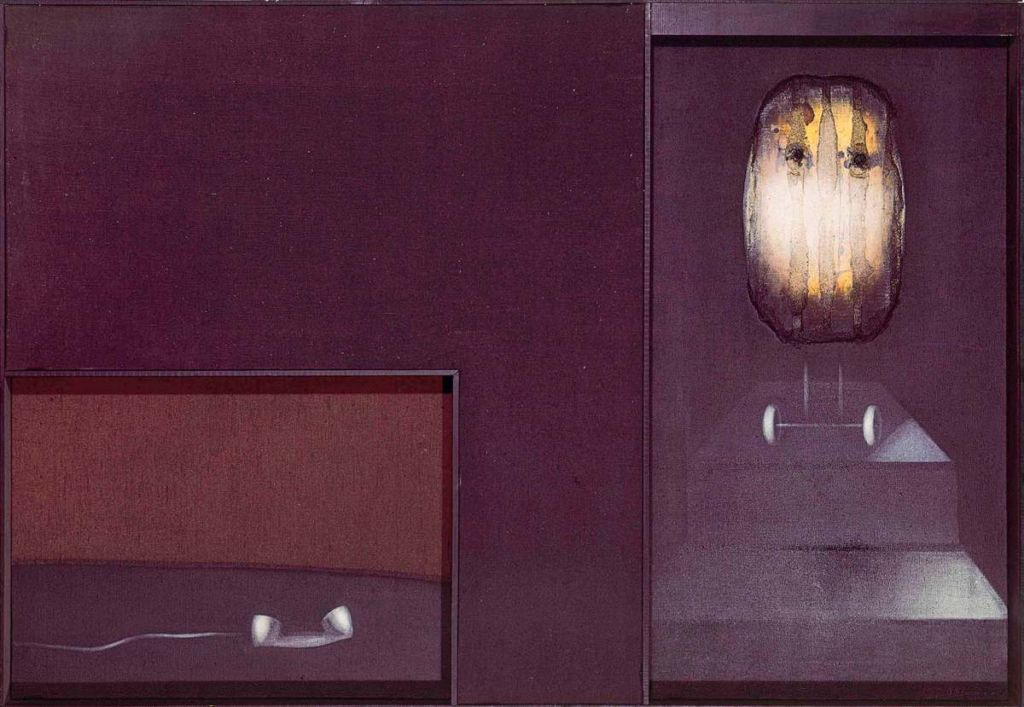Huntington’s disease is a rare and incurable genetic disorder that leads to cognitive, motor and psychiatric degeneration, and to a gradual loss of autonomy and death. In 2012, Valérie Pihet and writerAlice Rivières founded the association Dingdingdong, whose mission is to create a framework for knowledge production that gathers personal accounts to articulate them into new, pragmatic proposals, with the goal of helping users – people with the disease or carriers of it, family and loved ones, caregivers – live the disease with dignity. The ambitious scope of the project demands that users, researchers (doctors, philosophers, sociologists, historians…) and also artists (visual artists, writers, videographers, choreographers…) find innovative ways of collaborating to explore an illness still considered an unknown planet, and to uncover narrative forms that do their experiences justice as they chronicle their adventure in progress.
Manifeste de Dingdingdong, preceded by “On Chorea” by Georges Huntington, trad. Vincent Bergerat, Paris, Editions Dingdingdong, 2013.
Dewey (J.), Le public et ses problèmes (1927), trad. Joëlle Zask, Gallimard, 2003, p. 17.
The French dingue meaning ‘crazy’ or ‘mad’.
James (W.), La volonté de croire, Les Empêcheurs de penser en rond, Paris, 2005. See also Hermant (E.), Solhdju (K.), « Le pari Dingdingdong. Coproduire de nouvelles histoires naturelles de la maladie de Huntington avec et pour ses usagers », in Ecologie Politique, n°51, Paris, 2015.
W. James, Essays in Radical Empiricism, University of Nebraksa Press, 1996, p.22 ; Cited by Debaise (D.), « Un pragmatisme des puissances » in Multitudes, 2005/3, n°22, Paris, 2005, p. 104.
Fabrizio Terranova even went as far as to create a Master’s in speculative fabulation at the École de recherche graphique (School for Graphic Research – l’erg) in Brussels.
A play on the nearly homonymous French terms pro and pour, meaning ‘for’.
See Debaise (D), The Lure of Whitehead, University of Minnesota Press, 2014. L’appât des possibles. Reprise de Whitehead, Presses du Réel, 2015, p. 134.
Despret (V.), Au bonheur des morts, La Découverte, 2015, p. 14 et p. 52.
Debaise (D.), L’invention d’un univers pluraliste, colloquium « Au tournant de l’expérience », Cité de l’architecture et du Patrimoine de Paris, 2016, p. 2.
Zitouni (B.), “With whose blood were my eyes crafted?”, Haraway (D.) “Les savoirs situés comme la proposition d’une autre objectivité”, in Dorlin (E.), Rodriguez (E.) dir., Penser avec Donna Haraway, PUF, 2012, pp. 46-63.
Solhdju (K.), L’épreuve du savoir. Propositions pour une écologie du diagnostic, Editions Dingdingdong, 2015.
Switch (on Paper): Where does your interest in Huntington’s disease come from?
Valérie Pihet: When I found out that my father had a disease known to be neurodegenerative, for which there was still no diagnosis, I was profoundly affected. But above all, I went into a state of shock. Part of me went numb. I saw no other way to carry on than to ignore the numbness as best I could. One day, my father, quoting his neurologist, told me, “By default, we’re talking about a genetic disease.” It wasn’t the first time, I think, that the word “genetic” came up in our conversations, but that day, I suddenly went from shock to fear.
My father, like his doctors but for different reasons, tried to assuage my anxieties: there was no 100% proof that the disease was genetic (though no other hypothesis is plausible) and, even if it were, it wouldn’t necessarily be hereditary. Plus I wasn’t showing any symptoms yet. Maybe they were right, but something in my world shifted. Medicine entered my life, our lives, and this is no harmless thing.
There’s something completely surreal about being told not to worry while at the same time, samples of your father’s blood are being shipped from one lab to the next in order to determine whether it carries a whole array of diseases. Nobody tells you which diseases they’re testing for, but you know that each one is more or less likely to be hereditary. Since we’re talking about very rare diseases, sometimes you have to wait several years before the results of the analysis come in.
According to my father’s neurologist, they likely won’t be able to diagnose with any certainty, because 50% of cerebellar ataxia, the scientific name for these kinds of neurological disorders, are of unknown origin. For months, I demanded that the lab give me the list of tests being done and to have an MRI ordered for myself. I felt it was my right. But if I didn’t ended up taking them, it was because I was afraid. I didn’t know whether the results would help me or break me. I was stuck. The only decision I managed to make was to accompany my father to all of his neurology appointments. It seems like nothing but it was a real decision, because at first he didn’t want it. I was going as much for him as I was for me, without really understanding what I was looking for. I felt awkward during his consultations; they were completely cryptic to me. Why undergo this or that “reactivity” test? What does that mean after our last visit? Why are the neurologist and intern speaking to one another in such low voices? Why do they decide it’s useful to tell us one thing and not another? Who decides what is pertinent? Why am I so intimidated? Etc. Even though we were clearly the ones directly concerned, I felt like we weren’t in our right place. A thousand things happen during a medical consultation and the simple fact of being there and feeling afraid heightens our awareness and makes us even more sensitive to the smallest details.
It’s only now that I understand what was strange about the situation: everything that happens at the doctor’s office is of interest to the doctor, but nothing is done to involve the patients. If no treatment can be prescribed, then the priority for the patient is to learn to live with the illness. I felt trapped because I only saw the situation from a medical perspective, which trapped me in the logic of knowing/not knowing, of diagnosis, of disease evolution and definitions… In the end, it all prevented me from seeing that there were possibilities contained within this experience, for example, the opportunity to connect with my father in an entirely new way. My relationship to my family also reached a new dimension, in that it quite simply started to exist. The very fact that I insisted on involving myself in my father’s illness, and that he accepted my involvement, constituted in itself a noteworthy development. But it took meeting Alice and creating Ddd to really know how to make something of the situation.
I already knew Alice before she took the test that told her she was carrying Huntington’s, but it wasn’t until a few years later, once we’d become friends, that she made me read the text that would later become the Dingdingdong Manifesto1. She wrote it shortly after the test, in a moment of anger, but hadn’t yet found what to do with it. Reading the text touched me quite deeply, but it also put me in motion. It was the first step on a path elsewhere than the medical approach that dominates Huntington’s and disease in general. It showed that there were other stories to tell, a multiplicity of experiences. In other words; other ways to breathe and become agents of our own situations. Alice’s expression of rage was an act of resistance against a unilateral approach that looks at disease strictly through the prism of inevitable catastrophe. But it was also an invitation to reflect, or rather to “grow a thinking”, to use her words, on how to build a world more hospitable to persons with illness and those around them.
S.o.P: How did Dingdingdong start, and how has it grown since?
V.P: By creating Dingdingdong, we were betting that Alice’s story pointed to a much larger issue, a kind of political challenge: we would implicate ourselves in the knowledge that is made on our backs as users and demand that things decelerate when medical definitions move too fast or too broadly, thereby smothering any and all mystery in pre-established knowledge.
Medicine is trapped in its own temporality and the limitations of its own practices; it runs the risk of creating an even larger rift between what is medical definition and what is experienced.
For the people concerned, just as for some doctors, this disconnect can be violent and all too often leads to disaster. From the very start, our work involved users on the one hand, and healthcare providers on the other, reinforcing the idea that medical definitions need to break free from the shackles of certainty that confine, terrorize and determine, leaving no other horizon that a hopeless future.
It isn’t rare, for example, to hear that patients have or develop anosognosia. In other words, they no longer have any self-awareness about their condition. But that’s not exactly what we’ve seen in the patients that we know. Also, scientists themselves are far from reaching consensus on the precise definition of anosognosia; we may even all show signs of a kind of anosognosia. This inconsistency is typical of the great rift between science and how patients approach their illness. It’s not about finding things to criticize, but about making it possible for users to participate in knowledge-building on topics that concern them and cannot strictly be reduced to the medical field, above all when it comes to diseases without a cure. It’s more about creating real conditions for the co-production of knowledge, in other words, to make several kinds of knowledge co-exist, so that none excludes the other, rather they come together with the goal of creating viable ways for people to live fully with a disease like Huntington’s.
The most complicated and most political thing to do when facing such an overwhelming sense of helplessness and discouragement is to reappropriate our power to act. At the time of founding Dingdingdong, I had my students read The Public and its Problems, a book by the pragmatist American philosopher John Dewey. In it, Dewey asks us rethink the very fundamentals of politics, to give new meaning to this term which is often used as a label for all kinds of activity. He invites us to review the place and role of politics by framing the idea of the public in a new way. For him, there is no single omniscient public body that has an enlightened opinion about everything. Plus, what is considered public and private doesn’t correspond to the usual distinction made between what is a common good on the one hand and an individual good on the other. He tells us that politics is not just a sphere, a profession, an occupation, but goes beyond this, it is indeed a certain kind of concern brought to “causes” and “problems” that each require a particular form of public. The public does not exist as a singular term, as in a sovereign people represented by their elected officials and embodied by the state, rather a public emerges for every “cause” or “problem”. Thus, there is not one but many publics, interested in concrete issues that they can transform, publics that appear and disappear depending on how problems are solved. These publics must be remade anew every time; they are reinvented. So if there is a “crisis of the Public”, it is in this sense as described by Dewey; the crisis of the spontaneous emergence of publics. For Joëlle Zask, Dewey was always working as a philosopher, teacher and activist dedicated to rebuilding an effective public that would be fundamentally concerned with defining its interests and politicizing them rather than just maintaining control over governance2.
Seen from this angle, it seems possible but above all essential to conceive and create frameworks in which publics emerge that are capable of intervening in, proposing, objecting to and affirming the existence of a problem, keeping in mind that the proper construction of a problem is inherently connected with the possibility of its being solved. These dimensions must be considered together, they constitute a true investigation, according to Dewey. To do so, you need time and tools, you need to find the art and way of doing. A public is never given, it must always be put to work.
Anger like the kind Alice felt, unless you transform it, can be an effective motor for deciding to re-think the possibility of a public. This is what we decided to do. We were no longer alone, we were two. We decided to follow the principle that the “Huntingtonian” universe, or Huntingtonland as we like to call it, is just as mysterious as an unknown planet. We have to commit to exploring it, to transforming our perplexities into real enigmas, that is, into questions that draw forth myriad hypotheses, none of which would be vying for dominance.
To do so, we needed to form a team. We set out to meet people with whom we felt like collaborating in order to invent a new art and way of living with Huntington’s. We made a conscious decision to invite practitioners to join our cause. We didn’t require that people be directly affected by Huntington’s to be considered. Anyone can be involved so long as them problem, as Dewey saw it, calls one to question, whether it be through professional or personal practices. And so we put together a multidisciplinary French-Belgian team, made up of researchers in human sciences (philosophers, historians of science, psychologists), artists (dancers and choreographers, writers, visual artists, videographers, video game creators) and a specialized doctor (neurologist). Then we had to determine our way of working. At first we wanted to create a non-profit organization, but several people in the collective, including Fabrizio Terranova and Sophie Toporkoff, inspired us to be even bolder and to “fabulate” an institute for the co-production of knowledge before we could even make it a reality. They were right, because this fiction helped the institute become reality.
S.o.P: How is the organization supported financially?
V.P: We look for funding depending on the activity at hand. Although all of our projects are interrelated, the funding system sometimes requires us to single out a project and either direct it toward research, or direct it toward cultural and artistic endeavors. For instance, we receive funding from certain foundations in the healthcare industry for our research work on what we call experiential knowledge. Another example: we created a theatre show with funding from performing arts production and distribution platforms. We also founded our own publishing house. And we regularly ask for donations in order to finance completely or in part those activities that are less eligible for grants awarded through calls for projects.
We made a –political—choice not propose membership because Ddd is part of a larger, non-profit fabric. The various Huntington organizations that exist in France look like what we would identify as patient-advocacy groups. Their missions vary but most of them boil down to locating funds for research and/or financing individual patients. Our mission is different, albeit complementary. We do not want to position ourselves as competing with these organizations for members and therefore revenue. We are very attentive to what we do and to where our activities can lead, to an almost complicated degree. Which is why we established alliances with different organization and even played a rather essential role in creating an inter-organizational committee in collaboration with the Center for Huntington’s disease at Henri-Mondor hospital in Créteil.
S.o.P: The name Dingdingdong is both comical and enigmatic. Where does it come from?
V.P: “Huntington’s” is not an easy word to pronounce or memorize. A lot of people kind of mumble something like “dundingdong”… which quickly steered us to “Dingdingdong”, a name we genuinely think sounds rather nice. Dingdingdong, like a ringing bell, calling us together but also sounding the alert, announcing the changing tide. Actually, we like to say “dingdinguedong”3 to emphasize that humor is always welcome in our collective, in contrast to the rest of the title: “Institute for the Co-production of Knowledge on Huntington’s Disease”. This combination perfectly sets the tone for our activities: what we do is very serious but we do it full of joy.
S.o.P: From the way you talk or write, one gets the impression that Dingdingdong functions as a community. For example, you say “our” choreographer (Anne Collod) or “our” neurologist. You even coined the term “Dingdingdongian” to designate the people you work with. Would you really call this a community, or is it more of a network?
V.P: We function more like a collective. There are seventeen founding members, researchers, artists and persons with Huntington’s disease, all involved, and for the time being we want to nurture this group in its original constellation. We’re very attentive to what means to “be a collective”. Just as we look to slow down in the face of accelerated medical definitions, we also go slowly when we start to take our way of functioning for granted. Putting a collective in place demands a lot of precaution and tact, and the collective constantly needs to be reinvented. In order to find the best conditions for successfully co-producing knowledge, we have to ask ourselves time and time again what is driving this collaboration, without assuming that everyone is in the same place at the same time. Committing to collective work also means learning how to integrate each person’s interests according to their practice and the demands of the situation. This doesn’t mean that we get lost in endless discussions, but that we are all committed to the work, that is, to following through on a project according to the needs of a situation, regardless of the problem’s origins or who first articulated it.
Ddd presents itself as an institution, but in our case and contrary to what the term ‘institute’ typically encompasses, ours is to produce knowledge that is fragile and branches into alternative ways of conducting research. What matters most to us is the co-production of pertinent forms of knowledge, ones that are effective with regard to Huntington’s disease, made with and for its users. At the same time, we also want to take our practices to the school, or rather the anti-schooling, of Huntington’s. We aren’t driven by a need to further our individual practices, rather by the question that brought our institute into being: how can one lead a full life with Huntington’s disease? While we are working, it’s not only as researchers, but also as people who are personally involved in one way or another. We’re not trying to stay neutral, to find proof, or avoid methodological bias at any price, which are the characteristics of scientific objectivity. On the contrary, we endeavor to maintain a scrupulous awareness of the way in which our attachments, hesitations, and doubts contribute to the co-production of knowledge in symmetry with those of our collaborators. We do not try to “make science” but to “make knowledge”. When we use the term “Dingdingdongian”, in a way it’s to qualify the tone or style that we lend to our activities. We use the term “community” when talking about the general group of people affected by Huntington’s: the patients, the carriers, their family and friends and the healthcare providers.
S.O.P: On a theoretical level, your work follows the pragmatist school of thought, you even directly quote William James.
V.P: Pragmatist thinking is part of Ddd’s foundation, which is why we’ve dedicated an entire department to it. It would be absurd to try to summarize the numerous applications of this school of thought in a few lines, especially since we haven’t yet discovered all of them. But it’s a way of thinking that we strive toward in particular because it enables us, especially through the perspectives adopted by William James and John Dewey, to think and create in view of how we wish to affect one reality or one situation in which we are inherently stakeholders, rather than in view of our practices alone and what they demand. From James, we borrow a very powerful phrase that was also the title of one of his books, “The Will to Believe”. According to him, a fact cannot be established, and therefore become truth, unless it is preceded by a genuine belief prior to its advent. For him, it is important to cultivate this belief, in other words this confidence, to nurture it, maintain it, because it participates completely in transforming the reality we call forth from our desires4. Dingdingdong was born from the belief we have in its success, where success means that our work leads to initiating a transformation of the situation in France with regard to Huntington’s.
In four years, we can say that we’ve enabled quite a few people affected by Huntington’s to start imagining their lives with the disease as something less hopeless. To give an example, several support groups meet regularly, in pairs and outside of the healthcare context. Another example: in December 2015, the national Huntington’s day usually organized only by medical professionals and scientists, was organized for the first time with non-profit groups in view of giving users a chance to speak, which is a huge step in itself. I think you could say that Ddd played an important role in building confidence, particularly when it comes to “allowing oneself to”: allowing oneself to speak up, to get heard and to act, by proposing multiple approaches to being affected by illness. When we set to work, we first and foremost look to discerning what it is we wish to transform, and we try to use the most pertinent tools to get there. Speculative fabulation is based on exactly the same principles; we’ll come back to that. When we hedge our bets in this way, we run the risk of making mistakes or failing: which is precisely the defining quality of experimentation – most of all when its objective is to bring about real change.
We’ve also borrowed radical empiricism from the pragmatists, to reference another William James title. This obliges us to take everything that makes experience important into consideration: “To be radical, an empiricism must neither admit into its constructions any element that is not directly experienced, nor exclude from them any element that is directly experienced.5” This is why our mission is to nurture the multiplicity of experiences of Huntington’s disease, be they in the people affected or in the teams of healthcare providers, because medical science alone cannot encompass the entire range of experiences.
When it comes to patients or more generally to users, all too often we associate experience with personal stories. Personal history typically being the territory of psychologists, it makes patients focus on their emotions, their feelings. Everything follows the model of having on the one hand, patients reduced to their personal emotions and, on the other hand, healthcare practitioners reduced to their scientific knowledge. At Ddd, we work on the idea of experiential knowledge. We’re not the only ones using this term, but our use of it comes from a very particular acceptance of experience, as outlined by the pragmatist philosophers. For them, an experience cannot be reduced to the simple fact of being affected or feeling something. An experience is only complete if the fact that it affects us also drives us to act in a way –any way—that is capable of transforming the very conditions of that experience.
With this in mind, when we talk about experiential knowledge, it means we take very seriously all the things that users depend on daily to manage their illness. We consider that they are not limited to what they feel or endure but that they test strategies, gestures and attitudes that allow them to live with their illness, and these are genuine forms of knowledge that, if they were considered as such, would have rehabilitating power. Our mission is precisely to find ways of uncovering this knowledge, which, for now, remains invisible and therefore unusable, to collect and share it in such a way as to truly transform the conditions for experiencing this illness, one step at a time. We’re talking about an extremely meticulous kind of work because every word, every gesture, every approach is important in order for an experience to truly activate all the people it affects. Because of the fragile nature of this composition, you must constantly start anew, since it only takes one element to shift for the entire experience to be modified. With Ddd, we care about producing and cultivating the right life-space in the ecological sense of the word, to quote Vinciane Despret, a founding member of Ddd, an environment that promotes expanding and propagating experience beyond the experience of Huntington’s.
S.o.P: Your activity also builds on the notion of “speculative fabulation”. What does this fabulation consist of, in particular with regard to creating a “framework for knowledge production” about a specific disease?
V.P: Speculative fabulation is one of Ddd’s main tools. The term comes from Donna Haraway, but it’s used by several members of our collective6. The aim of speculative fabulation is to experience the effects and force of the intended fabulation not as an escape into the imagination, but as a way of vetting the possible over the probable, as our godmother Isabelle Stengers likes to say. This creative methodology, anchored in the reality of experience, is a slight deviation from reality in order to shake it up. A concept, an idea or a finished work cannot be measured in advance or independently of concrete situations. Its value depends solely on its effect, that is, on a capacity to play a part in transforming the reality in question. By joining the terms speculation and fabulation, we return to scrutinizing and detecting the possibilities inherent to any problem, and to finding storytelling devices that contribute to making these possibilities real, insofar as these stories convince us to believe in something enough to commit to their becoming true, as the philosopher William James entreats us to.
We have been counting on the power of fiction since the very start, having fabulated an institute for the co-production of knowledge on Huntington’s disease before any of our work could make it a reality. It seemed equally urgent to construct a narrative that gave true expression to the violent gesture of genetic testing in order to even begin overcoming it. We are working with Fabrizio Terranova on a series of video clips based on interviews with users and enacted by the performer Olivier Marboeuf, aka Dr Marboeuf. The series is a dramatization of a doctor who, little by little, transforms the terrible situation of having to tell someone they have an incurable disease into a situation that produces possibilities, or rather, a situation in which everything can be done. In the first clip, Dr Marboeuf recounts a particularly significant clinical experience that occurred after conducting a pre-symptomatic test: he tells his young female patient that her test has turned up unfavorable results. The woman returns with her sister who defiantly insists, “we will consider seeing you again when you will be capable of saying you don’t know”, which implies, “you cannot know what will happen precisely to my sister in particular”. The doctor turns this statement into a constructive provocation (what we call a pour-vocation7) that motivates him to create an experimental research unit to explore all aspects of Huntington’s in close collaboration with those affected by it8.
The second clip picks up where the first story leaves off, one year later. In this video, Dr Marboeuf reads and comments a letter received from Maud Kristen, a highly reputed French psychic. She elaborates on a series of reflections about genetic testing for Huntington’s disease and in particular, how to announce a bad result. The psychic’s words echo the doctor’s concerns, and he starts to rethink the process of announcing that someone is carrying a disease such as Huntington’s. These videos are posted on YouTube and presented in various contexts, notably at medical conferences. Whether their effect is visible or not, small or big, we want to believe, as William James encourages us to, that they are contributing to changing a closed situation into one that is up to the task9.
S.o.P: In one of your texts, you write that sometimes you cannot find the “right words” or that you don’t necessarily look for a “coherence that gives a general overview”. These ambivalent stances emphasize well the difficulty in working on such a delicate subject.
V.P: You’re making a reference to a text I wrote when I first started exploring Huntington’s chorea. Huntington’s used to be called that way because the chorea is without a doubt the disease’s most visible and spectacular symptom. In medical literature, chorea is defined as a succession of full-body movements; spontaneous, excessive, abrupt, unpredictable and irregular, often considered symptoms that must be controlled at any cost – which notably involves neuroleptic medication to help them “subside”. Furthermore, people with chorea are not necessarily aware of their movements. But by saying this, not much is being said. If you consider chorea strictly from the medical perspective, there aren’t any real reasons to interest oneself in these movements.
I immediately wanted to work on chorea because much of the taboo surrounding Huntington’s stems from there. Chorea is scary to look at and makes the disease seem terrifying. When you search the Internet for information on Huntington’s, the first things that come up are videos that show atrocious depictions of choreic diseases. These images can be disastrous for people affected by the disease. Our observations were that many people with chorea seek to reduce their most visible movements not for themselves, but for the comfort of the people around them. I heard about a dance workshop at Pitié Salpêtrière hospital for people with Huntington’s. There we met Julie Salgues and Philippe Chéhère, the two choreographers who started the workshop and have been leading it for over ten years. They told us about Mr D, a man in advanced stages of the illness, who refused to take any medication whatsoever destined to “stifle” his chorea. He said that he was a dancer and proud of it. We met him together with Anne Collod, a choreographer and member of Ddd. Mr D moved a lot, sometimes making very big gestures. And yet, despite sitting next to him for over an hour, he never even touched me, nor did he spill a single drop of water. I was intrigued because despite being unable to control their movements, or in some cases having absolutely no awareness of them whatsoever, some people with chorea seem to find ways of managing their movements.
That was the starting point for our research on chorea with Anne Collod. For me, I was keen to take part in an intensive that was based on the work group I’d been visiting for nearly a year. The work that Julie Salgues and Philipe Chéhère do shows how interesting chorea can be when you consider it for what it is: a dance rather than a symptom. What happens if we try to accompany the movement rather than stifle it? Although doctors suggest that people at different stages of the disease should avoid meeting one another, in the workshop people dance together without this posing a problem. I realized that dancing was a way to live Huntington’s from the inside, to not remain purely on the defensive. With Anne, we grew more and more intrigued by what chorea implicitly reveals in everyone, in anyone. What is spectacular and blatant in these choreic dances informs us on what we sometimes refuse to see in ourselves.
At one point, Mr D’s attention seemed to be saying, “I’m going to take the coffee cup.” But his hand finally ended up on my shoulder. During a seminar in Lyon with our friends from the Max-Wever Center, I recounted this episode which inspired Vinciane Despret to suggest the following, which I find quite enriching: it always seems as though intention precedes action, however, even if we aren’t aware of it, intention actually often defines itself through action. This calls into question our entire definition of subjectivity. We talk about deviated intention, but that’s not the right term because it would mean that intention precedes action. Here again, Vinciane proposes an interesting thought: why not speak of luring the intention, in reference to the “lures for feelings” by Isabelle Stengers and Didier Debaise10? The cup is a lure for Mr D’s intention, but another lure emerges in mid-path (my shoulder) that provides a detour, and this new lure creates intention. An entire range of possibilities now opens up: How are things lures for intentions? What is their agency?
Medical nomenclature reduces not only the richness of choreic experience but also conceals our ignorance when it comes to notions of conscience, perception, attention, interiority/exteriority… that address the dizzying questions of body/mind interaction, a question that has preoccupied science and philosophy since Aristotle and has also interested the fields of dance and the so-called somatic practices since the mid-twentieth century. I continue to investigate chorea thanks to our work with people affected by the disease, by interviewing their care providers, notably their physical and psychomotor therapists, and through the work with Anne Collod who investigates these notions through movement.
As we see here, to investigate is above all to nurture the things that “give the situation its power to exist”. Vinciane Despret talks about “ontological tact”11, which is to avoid settling too quickly on terms that could suppress an experience, minimizing both its force and fragility, and to work on preserving heterogeneity. This is why I spoke of finding the “right words” or avoiding a “coherence that gives a general overview”. In all of our research, we take great care to develop, very slowly, meticulously and cautiously, a language, be it verbal or not, that can change the conditions for experience. Because until now, the regular terms haven’t always enabled people affected by Huntington’s to live their disease fully. Words have effects, or, to paraphrase what Isabelle Stengers, Vinciane Despret and Donna Haraway are saying, how we speak participates in what we produce.
S.o.P: You work with artists (visual artists, writers, videographers, choreographers…) while taking great pains to avoid any formulaic relationships between art and illness. I’m thinking in particular of the limits you placed on your provisional workshop (“we see one another, we speak to one another, we leave one another”). In this way, you produce long-lasting, complementary relationships such as the elliptical portrait project by Anouck (who is affected by Huntington’s) or by the painter Alexandra Compain-Tissier. You also lead a choreographic investigation of gestures produced by the illness. Have you noticed any concrete results?
V.P: At Ddd, we like to develop things over time because what matters to us are the effects of what we produce, effects that need to be almost immediately seized, in the sense that we have to jump on them so that the experience can continue. Didier Debaise’s proposition Pour-suivre posits that the concept of experience is not limited solely to the perspective of the person undergoing that experience but extends to all things/situations/moments/activities/events that thereby become the very subject of the experience12. From then on, even the slightest shift can modify the entire course of the experience. And yet the continuum of experience is vital. As Maud Kristen wrote to Doctor Marboeuf: “movement alone is eternal13”. In order to pursue this direction, we have to nurture everything/one that contributes to these experiences – I insist on thing/one – including the temporalities they subsume. Huntington’s involves multiple temporalities: the genetic evolution of humanity, family trees (hereditary illness), the span of one lifetime. It is an evolving disease, it moves. Ddd must take into consideration the multiplicity of experiences and perspectives on the illness; those of the patients, their loved ones, the caregivers but also the gene responsible for it, the lab mice, etc.… in order to create stories that might build links between them. To do so, we need to draw on everybody’s inventiveness. We work with artists who we actually consider researchers, because they are explorers in Huntingtonland just like any other “researcher”. All of Ddd’s activities echo one another, nourish one another.
In her choreographic work, Anne Collod is interested in movement, particularly in how the collectivity makes us move – what is it to be together in dance? – but also how the disappeared, how beings and how artworks make us move. She was immediately touched by Mr D’s “style”, which inspired her to work on a series of choreographic portraits of Huntingtonian chorea. This is truly a powerful gesture, because if you consider that every person’s chorea involves its own dance steps, then chorea is no longer just a symptom but a singular characteristic that adds to a person rather than subtracting from them. So the project consists of creating “choreographic portraits” of persons with Huntington’s (particularly those whose movements haven’t been stifled by medication) in their own setting, where they live and act, in an environment that they have specifically chosen. Anne Collod films the person and then watches the images in slow motion while writing the trajectories and dynamics of their movements using Laban notation. Her intention behind transcribing with this notation system is to investigate and describe the choreic expression of the illness. The “writings” she collects are open to interpretation, particularly through dance: the dancer uses this slowness as the main way of accessing conscious movement, and the sensations and images with which they might be associated. So Anne still uses her own tools to work, all while taking into consideration not only what Mr D. has transmitted to her but also everything we learned about chorea through our other research activities.
The most important thing is to measure the reach of each person’s work. Indeed, this artistic performance and the process that led to it offer an innovative experience: learning to morph oneself, to become a body in Huntingtonian motion, before the eyes of the world. The piece clearly and profoundly modifies how we see the illness, making more out of chorea than just a meaningless symptom. Once we’ve seen these movements, these trajectories that seem to follow their own logic, we no longer look at chorea the same way. It is a transformative experience to watch this choreography, especially for people who are already intimately acquainted with Huntington’s. Anne Collod’s work reveals all the inventiveness, the sheer beauty of these movements! My father, who had never seen a dance performance, and who doesn’t have Huntington’s chorea but is developing other motor difficulties, was completely overwhelmed by Anne’s performance because it enabled another way of telling his story. My mother also came to realize certain dimensions of the experience that had been invisible until then. She’ll never look at the illness the same way again, which makes an enormous difference in her daily life with my father!
S.o.P: You say that you don’t differentiate between “artistic” and “scientific”. A rational person might be surprised by such a statement, what do you mean by it?
V.P: You can’t think the arts and social sciences outside of the situations that their practices touch upon. Any knowledge-building and/or -creation is motivated by a vital necessity and this necessity drives one process or another. The difficulty most often resides in being more or less able to formulate this necessity, aside from what the obvious, and articulate what connects us to it through our “professional” or “personal” practices. Collaborations between artistes and researches can take on multiple forms if we base them on problematic situations that ask to be resolved and if we pay special attention to their effects.
We talk a lot about arts-and-social-sciences-crossovers because we come from a long heritage of sectioning different fields of thought and creation off from one another, which is something that seems worthy of review today. And yet, I don’t think it’s about turning systematically to “pluri-inter-trans”, that would be just as dangerous. Once again, the situations themselves must have the power to disturb our thinking habits. “Any object of knowledge is an entity with agency with which one must make connections14.” Beyond “pluri-inter-trans” is re-thinking our disciplines in terms of related or interconnected knowledge. The primary demand would then be to pay attention to the relevance of these alliances, that is, to how they intervene to transform reality.
S.o.P: Your online publication includes the editorial sections “Testimonials”, “Field Reports” and “Notebooks”. These titles are similar to one another. What exactly differentiates them?
V.P: These sections are a way of differentiating some of our practices. We actually just renamed the “Testimonials” section to our preferred “Narrating/Thinking” which is closer to what we’re actually doing. Our first move was to get interested in the personal stories of people affected by Huntington’s, by considering them the “natural reservoirs” of experiential knowledge that we feel is important to collect. So we wanted to start there, but the task was not so simple. In fact, although scatterings of these stories exist, most of them are a “brute” form of user expression, corresponding to their cries of desperation or anger. Without presuming to know whether these expressions were necessary or not, we still thought it important to question their function. Which is why we decided to inspire other forms of testimonial-writing in complement to these expressions, by writing an article entitled “Our Huntington’s disease, a call for stories”. We asked ourselves, when someone shares a personal story, what about it makes up this much talked-about experiential knowledge that we’re calling for? How can we turn a testimonial about any situation, no matter how painful, into a part of knowledge production? In other words, how can we arrive at pragmatic testimonials that enable both authors and readers to have a dynamic grasp of a situation or problem?
We dedicated an entire project to this shift, which is not a given, in dialogue with the testifiers through discussions and correspondence. We collaborated to piece together a storytelling method that felt right, that would unfold the issues and stakes at hand – each time following the evolving pathways contained within each situation, which are never set in stone. When we put this work online, we didn’t try to erase the traces of our process so that it could also provide a learning opportunity: “How do I know that I know? How do I write what I feel? How can I discover what to do in a situation where everything seems impossible?” These are the questions that we addressed with our first collaborators. In our research project entitled, “Composing with Huntington’s. HD as cared for by its users”, we decided to go further and commit to a long-term process of knowledge co-production, turning a small number of users into genuine co-researchers by way of interviews and workshops.
The “Field Reports” section gathers lengthy reports of our visits to homes, science labs, conferences, etc.… The section “Notebooks” literally consists of our shared notes which we edit as we discover new readings, ideas, concepts, thoughts or questions. It encompasses mostly raw materials, a bit less focused but which we continuously work on and will review when the time is right.
S.o.P: You’ve also set up a small publishing house, les éditions Dingdingdong, distributed by Presses du Réel. Why this need for paper when you have a functioning website?
V.P: Books mean a lot to us. They nourish us, they are part of our configuration, even just as objects. So when it came to distributing some of our work, we seemed important to us to create a publishing house. Books take us deeper into question, for example Katrin Solhdju’s book L’épreuve du savoir (Trial by Knowledge), which addresses the difficulty of telling someone that they are cariers of HD. That kind of text doesn’t make sense on our website. We like to diversify how we distribute our research so we can reach a variety of audiences, and above all to touch them in different ways.
S.o.P: You mention Katrin Solhdju, a historian and philosopher of science, and a member of Dingdingdong15. Her text suggests, amongst other things, that our awareness of illness is evolving alongside the progress made in genetics. Do you plan to look further into these topics, which are not only about Huntington’s strictly speaking?
V.P: Neurodegenerative disorders affect over a million French people today, and due to our aging population, they concern more and more people. For the time being, only Huntington’s disease has a diagnostic test, but that will soon be the case for other illnesses, such as Alzheimer’s.
Huntington’s therefore constitutes a unique and precious empirical model for diseases that, although they manifest themselves late in life, can be diagnosed very early on. This poses a multitude of ethical questions, especially in light of how hard it currently is to treat these diseases. Katrin Solhdju’s book revisits these questions all while remaining concrete about Huntington’s, enabling us to already observe where this kind of illness might lead. Everyone admits –doctors and users—that pre-symptomatic diagnosis for an incurable disease practically creates an inhumane situation that forces us to redefine our relationship to the future, to medicine and to our own health. Though we try to remain as close to the field of Huntington’s as possible, precisely in order to avoid any hasty generalizations that may once again flatten the subtlety and heterogeneity of experiences, clearly the problems that arise from Huntington’s echo those associated with other illnesses.
During the summer seminar organized by Espace Ethique Ile-de-France on neurodegenerative illnesses in September 2015, we recently integrated some exchanges with persons affected by neurologically evolving diseases like Alzheimer’s, Parkinson’s, Friedreich’s Ataxia and Multiple Sclerosis. These exchanges, alongside our own research, lead us to open a space dedicated to what we call “transneuro”. It’s not so much about comparing experiences than allowing them to resonate, and mainly to show how people affected by these diseases can be at the heart of what is being said about their illness. This might seem obvious, but it’s really not the case. Today, people with illness have a minority, if not inaudible, voice whenever their illness requires us to modify our “normal” communication parameters in order to listen. This space is about sharing interventions so that exchanges and rebounds can take place whose stories and lessons cannot be predicted in advance. These exchanges are facilitated by Ddd and the authors of the texts, in the hopes that people at home living through similar experiences are inspired to find their own ways of participating in the initiative.
S.o.P: Why are some Huntingtonians anonymous (Mr D.), and others not (Alice Rivières)?
V.P: It is extremely important that people who work with us have the option to remain anonymous because publicly declaring that you carry such a disease can have dire consequences, namely with insurance providers, but also with family members, since each family has their own way of revealing –or not—a disease. Alice Rivières is a fictional character who enables the author to express himself or herself freely, but who also constitutes a creative lever for exploring planet Huntingtonland.
Editing by Eric Mangion
Translation by Maya Dalinsky






